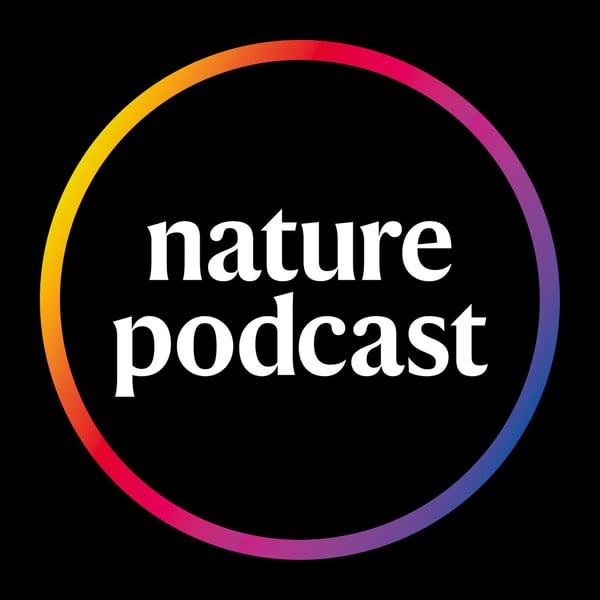Surprise finding reveals mitochondrial 'energy factories' come in two different types
Nature Podcast
[email protected]
4.4 • 859 Ratings
🗓️ 6 November 2024
⏱️ 30 minutes
🧾️ Download transcript
Summary
00:46 Mitochondria divide their labour to help cells thrive
Researchers have uncovered that mitochondria divide into two distinct forms when cells are starved, a finding that could help explain how some cancers thrive in hostile conditions. Mitochondria are cellular powerhouses, creating energy and vital metabolic molecules, but how they are able to do this when resources are limited has been a mystery. It turns out that in nutrient-poor situations, mitochondria split into two separate types, one which concentrates on energy production, the other on producing essential cellular building blocks. Together these allow cells to make everything they need. The team showed that this also happens in certain cancer cells, which may help them survive and grow under hostile conditions in the body.
Research Article: Ryu et al.
News and Views: Division of labour: mitochondria split to meet energy demands
Video: A new kind of mitochondrion
07:53 Research Highlights
A tidy genome may explain naked mole rats’ long lifespans, and why the midlife crisis may not be as ubiquitous as previously thought.
Research Highlight: Naked mole rats vanquish genetic ghosts — and achieve long life
Research Highlight: The midlife crisis is not universal
10:41 A smashing way to snapshot an atomic nuclei’s shape
Physicists have revealed a new technique to image the shape of atomic nuclei — by smashing them together. The nucleus of an atom doesn’t really resemble what is shown in textbooks — they actually come in a variety of shapes, which drive an element’s behaviour. Current methods essentially take a long-exposure photo of an atom’s nucleus, which doesn’t capture the subtle variations in how the protons and neutrons arrange themselves. The new method overcomes this by colliding nuclei together and then using information on the resulting debris to reconstruct the shape of the nucleus. The researchers hope that this technique can help physicists resolve many more mysteries about atomic nuclei.
Research Article: STAR Collaboration
News: Scientists worked out the shapes of atomic nuclei — by exploding them
19:51 Briefing Chat
Analysing the genome of an ancient clone forest has revealed it could be up to 80,000 years old, and how putting limits on the famous infinite monkey theorem means they probably wouldn’t churn out Shakespeare before the end of the Universe.
Nature: The world’s oldest tree? Genetic analysis traces evolution of iconic Pando forest
The Guardian: Universe would die before monkey with keyboard writes Shakespeare, study finds
Hosted on Acast. See acast.com/privacy for more information.
Transcript
Click on a timestamp to play from that location
| 0:00.0 | The Nature podcast is supported by Nature Plus, a flexible monthly subscription that grants immediate |
| 0:05.7 | online access to the science journal Nature and over 50 other journals from the nature portfolio. |
| 0:11.7 | More information at go.nature.com slash plus. |
| 0:16.1 | Hello, it's Renee. And Courtney here. And our podcast is currently sponsored by NHS blood and transplant. |
| 0:22.0 | There is currently a real need in the UK for people of Black Heritage to give blood |
| 0:26.3 | regularly to help treat black patients with sickle cell. |
| 0:30.1 | Sickle cell can affect anyone but is more common in people of Black Heritage and is the fastest |
| 0:34.5 | growing inherited blood disorder in the UK. |
| 0:37.1 | The NHS needs 250 blood donations a day to help people affected with sickle cell. |
| 0:43.1 | The good news is that giving blood is quick and easy. |
| 0:46.7 | It just takes one hour to save up to three lives. |
| 0:50.6 | It's in our blood to help fight sickle cell. |
| 0:53.5 | Book now at blood.com. |
| 0:55.1 | UK. |
| 1:02.0 | Nature and experiment. |
| 1:03.5 | Why is blight so far? |
| 1:06.3 | Like, it sounds so simple. |
| 1:07.5 | They had no idea. |
| 1:09.0 | But now the data's... |
| 1:10.2 | I find this not only refreshing, but at some level astounding. |
| 1:17.9 | Nature. |
| 1:21.9 | Welcome back to the Nature podcast. |
... |
Transcript will be available on the free plan in -144 days. Upgrade to see the full transcript now.
Disclaimer: The podcast and artwork embedded on this page are from [email protected], and are the property of its owner and not affiliated with or endorsed by Tapesearch.
Generated transcripts are the property of [email protected] and are distributed freely under the Fair Use doctrine. Transcripts generated by Tapesearch are not guaranteed to be accurate.
Copyright © Tapesearch 2025.

